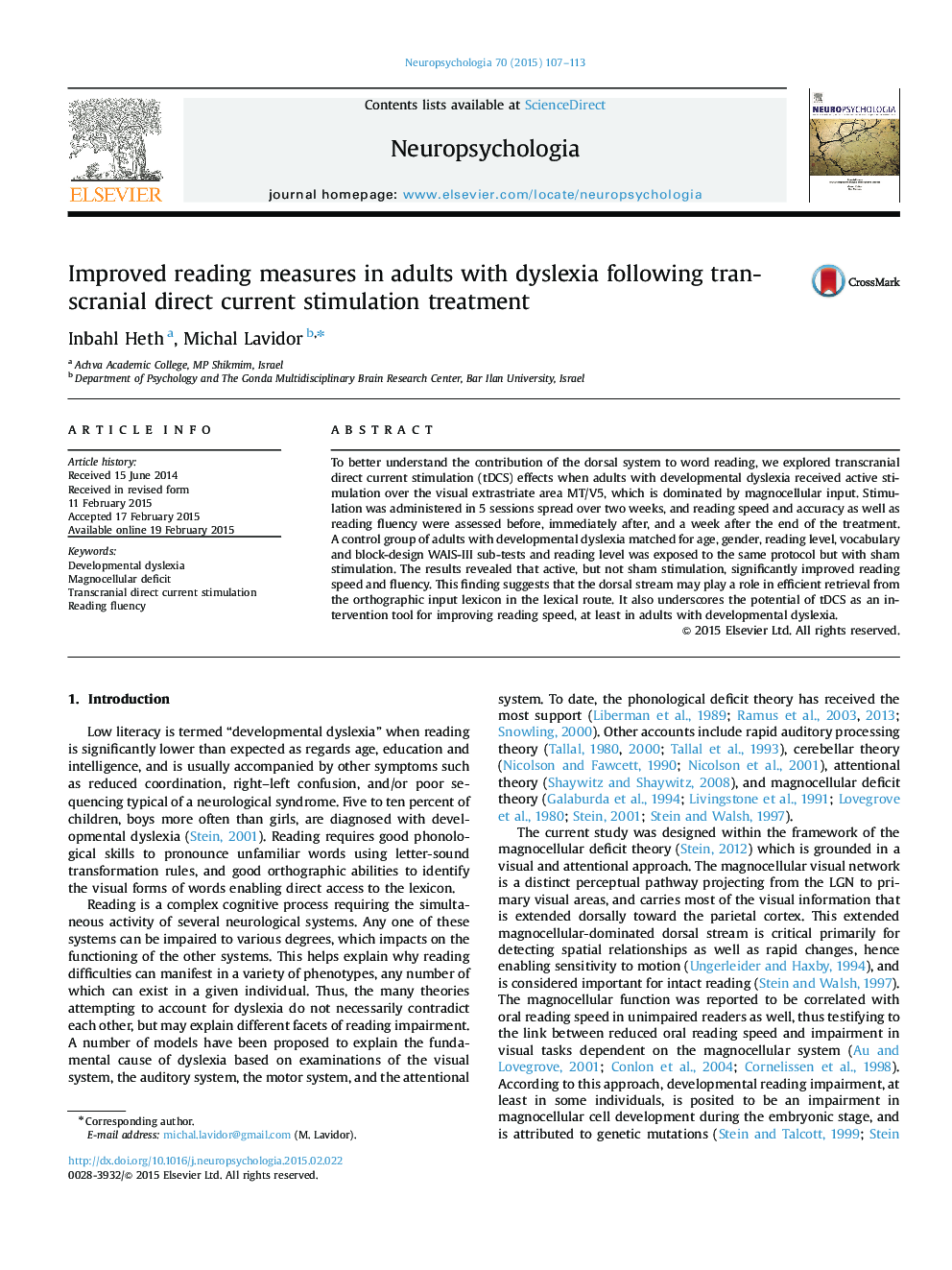| Article ID | Journal | Published Year | Pages | File Type |
|---|---|---|---|---|
| 7320414 | Neuropsychologia | 2015 | 7 Pages |
Abstract
To better understand the contribution of the dorsal system to word reading, we explored transcranial direct current stimulation (tDCS) effects when adults with developmental dyslexia received active stimulation over the visual extrastriate area MT/V5, which is dominated by magnocellular input. Stimulation was administered in 5 sessions spread over two weeks, and reading speed and accuracy as well as reading fluency were assessed before, immediately after, and a week after the end of the treatment. A control group of adults with developmental dyslexia matched for age, gender, reading level, vocabulary and block-design WAIS-III sub-tests and reading level was exposed to the same protocol but with sham stimulation. The results revealed that active, but not sham stimulation, significantly improved reading speed and fluency. This finding suggests that the dorsal stream may play a role in efficient retrieval from the orthographic input lexicon in the lexical route. It also underscores the potential of tDCS as an intervention tool for improving reading speed, at least in adults with developmental dyslexia.
Related Topics
Life Sciences
Neuroscience
Behavioral Neuroscience
Authors
Inbahl Heth, Michal Lavidor,
